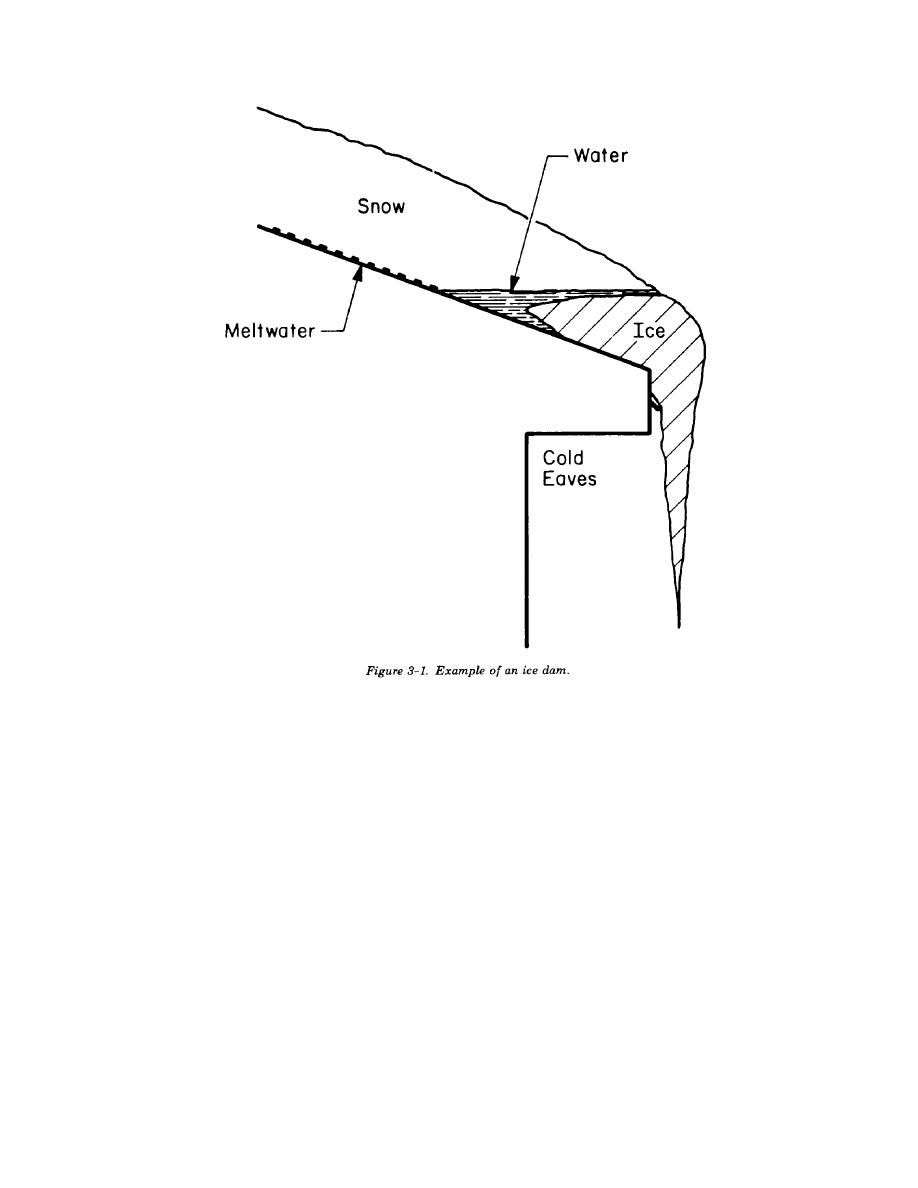
TM 5-852-9/AFR 88-19, Vol. IX
reinforcing steel has broken while being bent. Nickel alloy steel provides needed ductility; however, it may
not be economically feasible. Steel conducts heat through walls, causing condensation and ice formation on
structural members or melting snow which subsequently forms ice on the exterior surfaces. Where feasible,
metals should not extend through exterior walls. Insulation or other materials should be used to interrupt the
heat transmission. For example, rails armoring floors against abrasion or other damage from operation of
tracked vehicles should be interrupted at entrance doors. This is discussed further in TM 5-852-4/AFM 88-
19, chapter 4.
(3) Concrete. Concrete structures are very successful in the arctic when concrete mix is properly
designed and cold weather concreting is accomplished in accordance with ACI Standard 306, or when the
concrete is placed in warmer weather. The concrete mix should be designed with entrained air to provide
durability against freeze-thaw effects. Precast and prestressed concrete techniques, including tilt-up panels,
have been used without problems. Most commonly, failure of properly placed concrete has occurred because
the concrete has been subjected to water saturation, then allowed to freeze. This can frequently be avoided
by diverting the water. The temperature of the concrete, when placed, should not be less than 40EF and
special protection should assure it is not subjected to temperatures less than 40EF before final set has
occurred.
(4) Epoxy bonding agents. When using epoxy, be sure to check the manufacturer's
recommendations. Some epoxy cannot be successfully applied when surfaces are below 50EF.
3-4. Foundations. As in all climates, foundation design is of major importance. The unusual consideration
in arctic and subarctic environments is the presence of deep seasonal frost or permafrost. Depending on the
characteristics of the soil and its thermal regime, foundation designs may be either passive (maintaining the
foundation materials in a frozen state for the entire service life of the structure) or active (thawing and
3-2


 Previous Page
Previous Page
